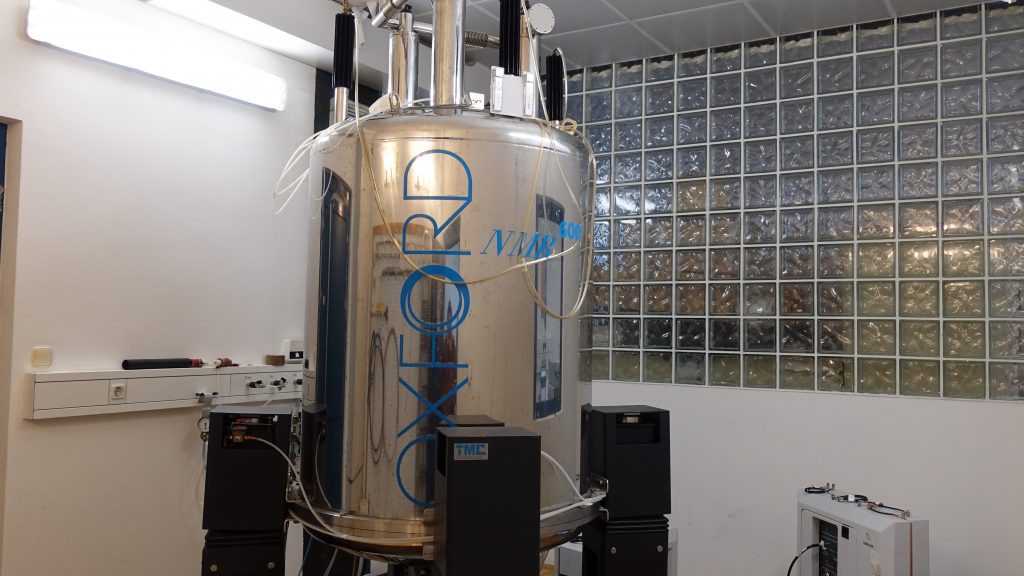600 MHz Nuclear Magnetic Resonance Spectrometer (Magic)
Slovenian NMR Centre in Ljubljana
Nuclear Magnetic Resonance spectroscopy is a research technique that exploits atomic nuclei with non-zero magnetic moments to act as tiny probes for the detection of the local structure, dynamics, reaction state and chemical environment within molecules. NMR spectra are unique, well-resolved, analytically tractable and often highly predictable for small molecules. NMR analysis is therefore used for confirming the identity of a substance. Different functional groups are easily distinguishable and identical functional groups with differing neighbors still give distinguishable signals. NMR is also a valuable tool for studying local structure and dynamics in a variety of solid systems. Objects of such solid-state NMR studies in materials science are inorganic/organic aggregates in crystalline and amorphous states, composite materials, heterogeneous systems including liquid or gas components, suspensions and molecular aggregates with dimensions on the nanoscale.

Contact: Janez Plavec
Tel: +386 147 60 353
Technical specifications Agilent Technologies VNMRS 600 MHz
| Magnet: | 14.1 Tesla 51 mm bore Oxford Superconducting Magnet |
| System: | Red Hat 6.1 |
| Software: | VNMRJ rev. 3.2A |
| Probe 1: | 5mm 1H{13C/15N} PFG Triple Probe (from -20oC to +80oC) |
| Probe 2: | 5mm 1H{13C/15N/31P} PFG Penta Probe (from -100oC to +120oC) |
| Probe 3: | 5mm 13C-31P Broadband Probe (from -150oC to +200oC) |
| Probe 4: | 5mm low-gamma Broadband Probe (from -80oC to +130oC) |
| Probe 5: | 5mm 1H{15N-31P} PFG Indirect Probe (from -50oC to +50oC) |
| Probe 6: | 4mm 1H Nano Probe (from -150oC to +200oC) |
| Probe 7: | 3.2mm Double Resonance HX MAS Probe (Varian) (from -40oC to +100oC) |
| Probe 8: | 1.6mm Triple Resonance HXY FastMAS Probe (Varian) (from 0oC to +70oC) |
| Probe 9: | 5mm Triple Resonance HXY SupersonicMAS Probe (Doty) (from -40oC to +70oC) |
| Probe 10: | 4 mm Double Resonance HX HotMAS (Custom made) (from +30oC to +320oC) |
Sample environment
Detailed information can be found on the Instrument’s webpage.
-
20.02.2025
X-ray computed tomography (CT) TomoLab
-
23.01.2025
THz beamline TeraFERMI



